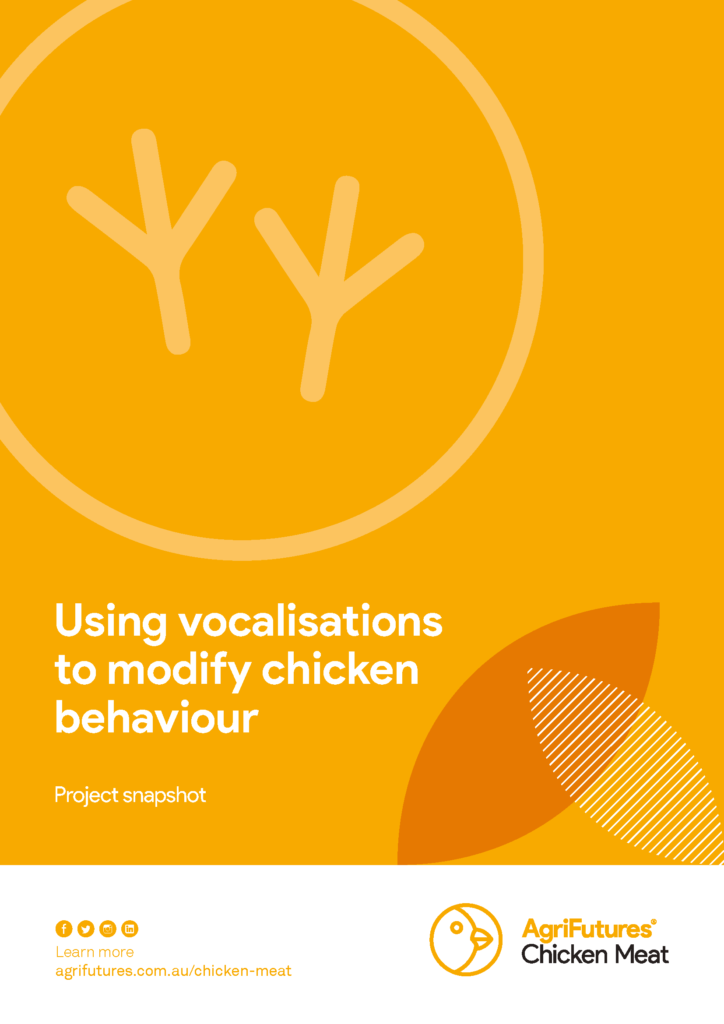Recordings of mother hen vocalisations have been shown to improve growth of meat chickens. However, opportunities to use vocalisations in commercial settings to improve bird welfare, reduce management inputs and improve productivity are unknown.
This project identified variation in the frequency of feed, cluck and roost calls between mother hens; discovered novel information regarding the elusive roost call; and provided high-quality recordings of a variety of vocalisations that could be utilised to modify chicken behaviour. The authors found evidence that feed calls have stress-alleviating effects – a finding that warrants further investigation – and that playing vocalisations on commercial farms is practical and feasible. However, free-range birds could not be attracted back into a shed during range access with the use of mother hen calls. Further, there was little evidence that feed, cluck or roost calls immediately influence chick behaviour. This project used various measures of bird welfare, including novel indicators that can help inform objective decisions on bird welfare in the future.
The authors provide evidence that vocalisations may be a useful industry tool to safeguard bird welfare, but this requires further investigation, particularly on commercial farms. This project paves the way for future investigations into chicken welfare and the use of vocalisations.





